Lines are the elemental strokes that artists use to create forms, shapes, and textures in their works. They are fundamental elements in art, serving as the building blocks of composition and expression.
Each type of line can convey a unique emotion or concept, enriching the visual language of an artwork. In the world of art, lines are not just simple marks; they are dynamic tools that carry multiple meanings and intentions.
In this post, we explore 30 different types of lines, from the elegance of calligraphic lines to the spontaneity of gesture lines, each contributing to the artist’s narrative. Understanding these lines will enhance your artistic practice and allow you to communicate more effectively through your work.
1. Horizontal Lines
- Meaning: Calmness, stability, and restfulness.
- Lines that run parallel to the horizon. Horizontal lines often give a sense of grounding and peace. They are associated with landscapes, horizons, and can imply a resting place or stillness.
2. Vertical Lines
- Meaning: Strength, growth, and upward movement.
- Lines that run perpendicular to the horizon. Vertical lines draw the viewer’s eye upward, creating an impression of height and dignity. They can suggest power, authority, or stability, as they are often found in structures like trees and buildings.

3. Diagonal Lines
- Meaning: Dynamic energy, tension, direction, movement and action.
- Lines that slant at an angle. Diagonal lines create a sense of dynamic movement and energy, often leading the eye in a specific direction. They can suggest instability, as they imply potential motion or a shift in balance.
4. Straight Lines
- Meaning: Structure, clarity, stability and order.
- Lines that have a consistent direction and do not curve. Straight lines convey stability and purpose. They move directly from one point to another, creating boundaries and defining spaces. Depending on their orientation, they can suggest calmness (horizontal), strength (vertical), or movement (diagonal).

5. Curved Lines
- Meaning: Grace, softness, organic forms and fluidity.
- Lines that form gentle or flowing curves. Curved lines mimic the natural curves found in nature, like waves and hills. They can convey a sense of gentle movement, comfort, or sensuality.
6. Wavy Lines
- Meaning: Freedom, natural movement, and rhythm.
- Wavy lines often mimic natural shapes like water or rolling hills. They suggest gentle, fluid movement and are calming and organic.

7. Spiral Lines
- Meaning: Growth, transformation, and evolution.
- Spirals can represent expansion and progression. They can draw the viewer inward or outward, suggesting a journey or the process of change.
8. Zigzag Lines
- Meaning: Excitement, chaos, intense movement and unpredictability.
- Lines characterized by sharp angles and abrupt changes in direction. Zigzag lines create a sense of energy and may suggest confusion, conflict, or movement. They can convey both positive energy (excitement) or negative (anxiety) depending on their context.

9. Parallel Lines
- Meaning: Uniformity, balance, and harmony.
- Lines that run side by side at a consistent distance. Parallel lines can create a sense of order and consistency. They often suggest stability and control due to their even spacing, used to create texture or pattern.
10. Perpendicular Lines
- Meaning: Structure, balance, and formality.
- When lines intersect at right angles, they create a sense of order and organization. Perpendicular lines can convey formality and structured design.

11. Hatching Lines
- Meaning: Texture, shadow, and dimension.
- Parallel lines used for shading and creating value. Hatching lines are parallel lines placed closely together, commonly used to create shading and texture in drawings and engravings. By varying the spacing, you can control the darkness or lightness, giving depth to a flat surface.
12. Cross-Hatching Lines
- Meaning: Depth, texture, and shadow.
- Parallel lines that intersect to create a mesh-like pattern. Cross-hatching involves layering sets of hatching lines at different angles, typically perpendicular, to build up shadows and create a rich, textured effect. This technique is useful for adding volume, contrast & texture, often creating a sense of solidity and form.

13. Outlines
- Meaning: Definition, shape, and form.
- Bold lines that define the outer edges of shapes. Outlines are solid lines that define the edges of shapes or forms, providing clarity and structure to a composition. They create boundaries and help distinguish objects from one another, often serving as the foundational element in drawings.
14. Contour Lines
- Meaning: Definition, structure, and precision.
- Lines that define the outer edges of objects and forms. Contour lines are used to define the edges of a shape or form, giving it clarity and a sense of form. They can create boundaries and distinguish elements from their surroundings.

15. Intuitive Lines
- Meaning: Spontaneity, creativity, and personal expression.
- Lines drawn spontaneously. Intuitive lines are lines created through instinct and feeling rather than strict planning. They often reflect the artist’s emotional state and can convey a sense of freedom and creativity in the artwork.
- Example: In an abstract painting, a series of flowing, freeform lines might express the artist’s feelings of joy or excitement, creating a vibrant, dynamic composition.
16. Scribble Lines
- Meaning: Movement, chaos, energy, and spontaneity.
- Lines made by rapid, loose, and often repetitive movements of the hand, resulting in a scribbled appearance. Scribble lines can appear chaotic, creating a sense of disorder or untamed energy. They often suggest movement and can express raw emotion.
- Example: A sketch of a busy street scene may feature scribble lines to depict the movement of people and vehicles, capturing the chaotic energy of the environment.

17. Broken Lines
- Meaning: Disruption, fragility, or separation.
- A line made up of dashes or short segments that are spaced apart. Broken or dashed lines can suggest something that is interrupted or not fully connected. They evoke a sense of vulnerability, distance, or division.
- Example: In an abstract painting, broken lines can create a sense of movement or tension, representing fragmentation or disconnection. This can evoke feelings of chaos or emotional struggle, making the viewer reflect on the nature of the composition.
18. Dotted Lines
- Meaning: Fragility, impermanence, and uncertainty.
- A line made up of a series of dots, evenly spaced or irregularly spaced. Dotted lines often indicate a path, a boundary, or a non-continuous connection. They may suggest fading, incompleteness, or a sense of lightness.
- Example: In a diagram, a dotted line can represent a proposed route on a map, indicating that the path is not yet established or is less important.

19. Interrupted Lines
- Meaning: Hesitation, incompleteness, fragility and pause.
- Lines that are broken or fragmented, lacking continuity and often consisting of gaps or pauses. Interrupted lines create a feeling of pause or uncertainty. They create visual interest and can suggest a break in thought or action. They can be more varied in appearance than broken or dotted lines.
- Example: In an abstract painting, an interrupted line might represent a thought process that is fragmented, with breaks that suggest pauses or disruptions in flow.
20. Chaotic Lines
- Meaning: Turbulence, instability, unrest, conflict and disorder.
- Lines that are erratic, disordered, and lack any clear direction or structure. Chaotic lines are unpredictable, often with sharp turns and angles, conveying a sense of confusion or inner turmoil. They can represent strong emotions like anger or excitement.
- Example: In an abstract expressionist artwork, chaotic lines might be used to represent internal struggle or chaos, creating a visually striking and emotionally charged composition.

21. Winding Lines
- Meaning: Journey, complexity, and exploration.
- Winding lines are curved lines that twist and turn in a flowing manner, creating a serpentine or meandering effect. They often suggest a natural flow, like that of a river or a path through a landscape, suggesting a journey or exploration. They can evoke a sense of adventure or complexity.
- Example: In a painting of a garden, a winding path may lead through flowers and trees, creating a sense of exploration and inviting the viewer to follow the twists and turns.
22. Converging Lines
- Meaning: Perspective, distance, and focus.
- Lines that appear to meet at a single point in the distance. Converging lines are lines that angle toward each other and meet at a single point, often used to create a sense of depth or draw attention to a focal point. They can lead the viewer’s eye into the composition, giving the illusion of space or distance.
- Example: Railroad tracks that appear to converge in the distance, leading the eye to a point on the horizon.

23. Leading Lines
- Meaning: Focus, guidance, and movement.
- Leading lines are compositional elements that draw the viewer’s eye toward a specific point or area within the artwork. They guide the viewer’s gaze through the piece, creating a sense of depth and directing attention.
- Example: A winding road in a landscape drawing that leads the viewer’s eye to a distant mountain, or a pathway in a landscape that leads to a distant house, drawing attention to it.
24. Directional Lines
- Meaning: Movement, flow, and orientation.
- Directional lines establish a sense of motion or flow and can create a dynamic composition. They can be straight or curved and can guide the viewer’s eye across or through the artwork without necessarily leading to a specific point.
- Example: A diagonal line created by a falling tree that suggests a movement towards the left or right side of the composition.
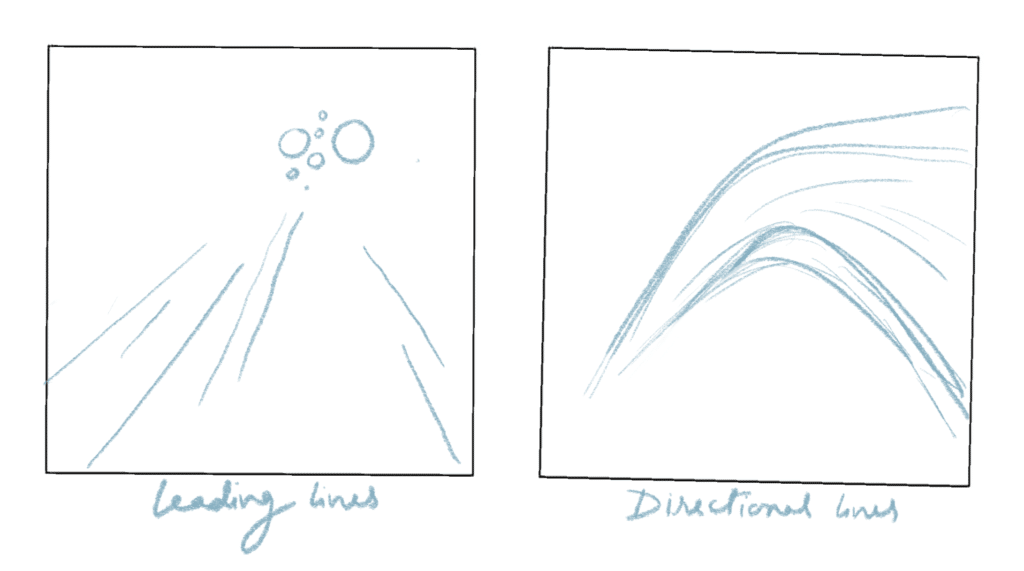
25. Thick/Hard Lines
- Meaning: Strength, dominance, and emphasis.
- Precise, well-defined lines often used to create sharp contrasts. Thick or hard lines are bold and impactful, often used to draw attention to key elements in a composition. Their substantial width creates a strong visual presence.
26. Thin/Soft Lines
- Meaning: Delicacy, subtlety, and fragility.
- Thin or soft lines feel light and gentle, conveying a sense of delicacy. They are often used to create fine details and can evoke a sense of calm or softness in a piece.

27. Calligraphic Lines
- Meaning: Elegance, fluidity, and artistry.
- Calligraphic lines are expressive, flowing lines that vary in thickness and curvature, often used in decorative writing and artistic expressions. They convey a sense of movement and creativity, adding an artistic flair to compositions.
28. Gesture Lines
- Meaning: Movement, emotion, and spontaneity.
- Gesture lines are quick, fluid lines that capture the essence of a subject’s motion or position, commonly used in quick sketches.. They convey energy and emotion, often used in figure drawing to depict the dynamic nature of the human form.

29. Implied Lines
- Meaning: Suggestion, connection, and indirectness.
- Implied lines are not actually drawn but suggested by the arrangement of other elements, relying on the viewer’s perception to complete the form. They can guide the viewer’s eye, creating a sense of connection without being overtly visible.
30. Radial Lines
- Meaning: Focus, energy, and radiance.
- Lines that radiate outward from a central point. Radial lines extend from a central point outward, directing the viewer’s attention and creating a focal point. They can suggest energy, light, or growth.
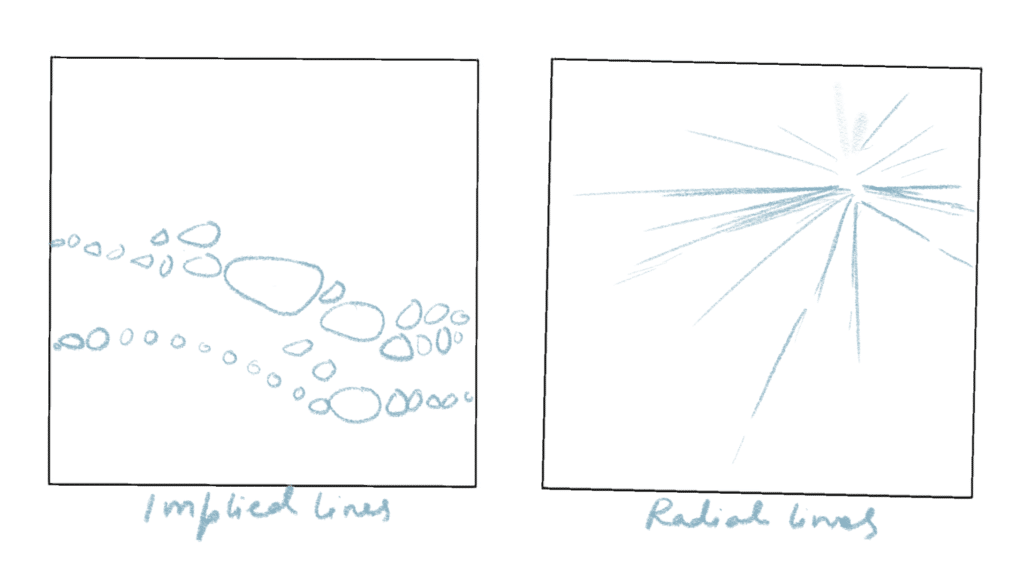
Exploring the diverse world of lines opens up endless possibilities for creativity and expression. Each line type carries its own meaning, offering artists powerful tools to convey emotion, movement, and narrative.
By incorporating these 30 types of lines into your artwork, you can elevate your compositions and engage your audience on a deeper level.
Embrace the versatility of lines, and let your artistic journey be guided by their unique qualities

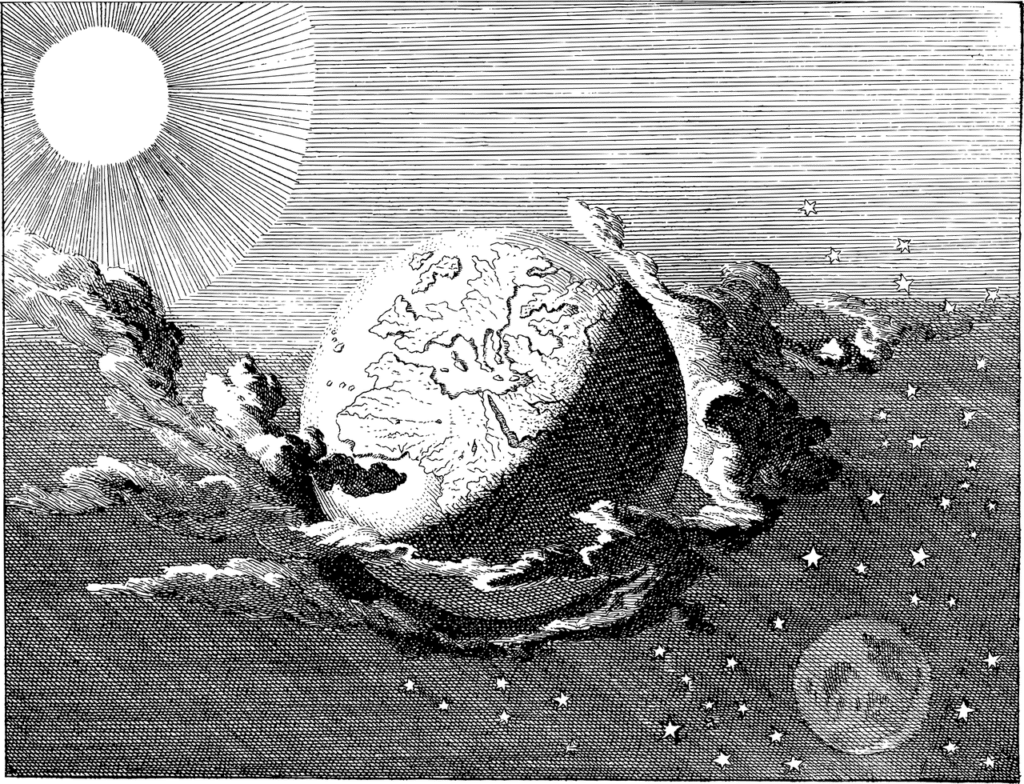

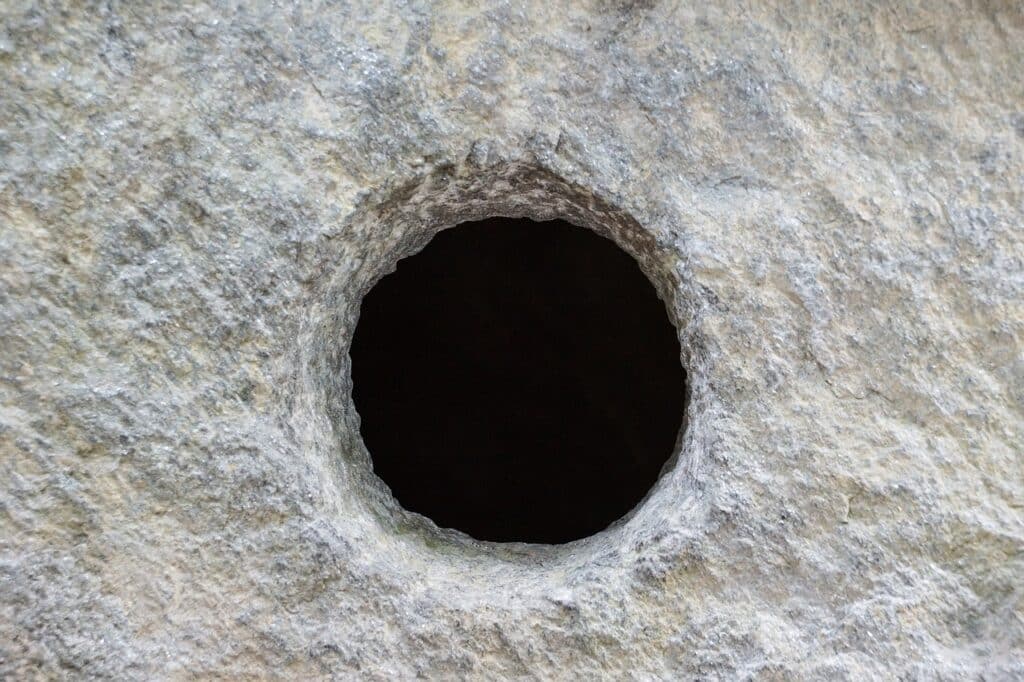
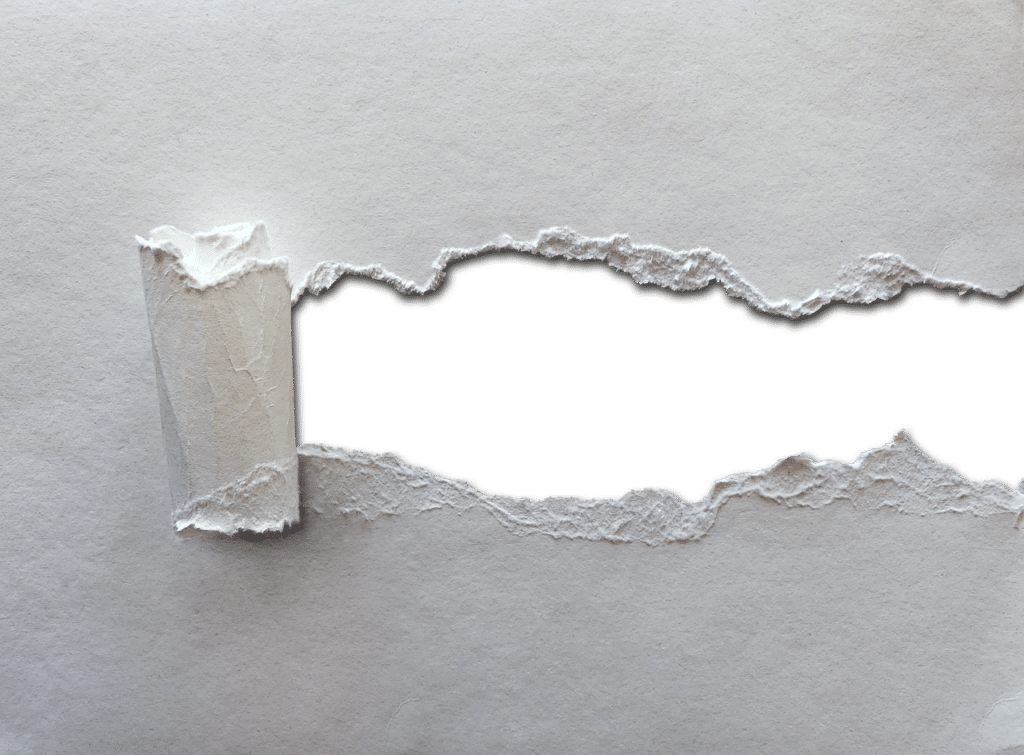
what great definitions and examples! Well done.
I really love this exposition, more of it.